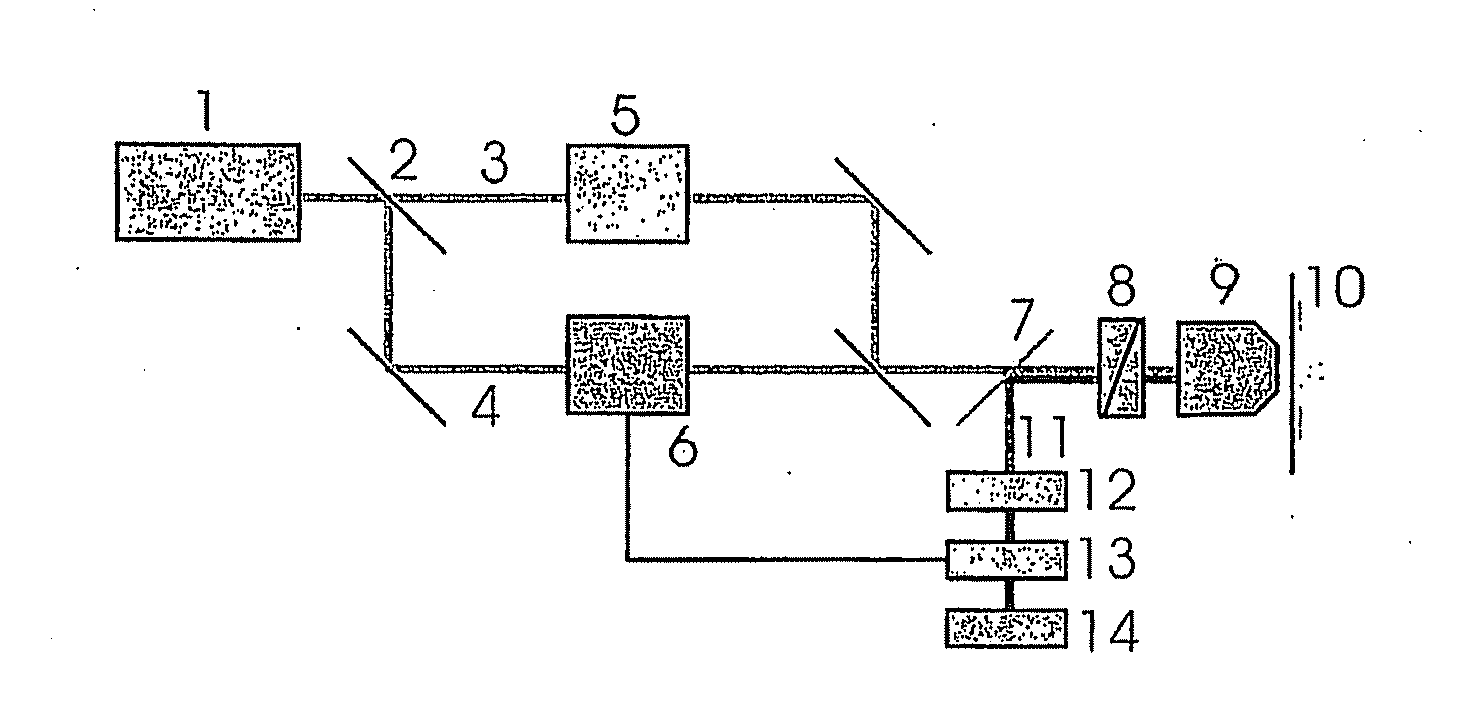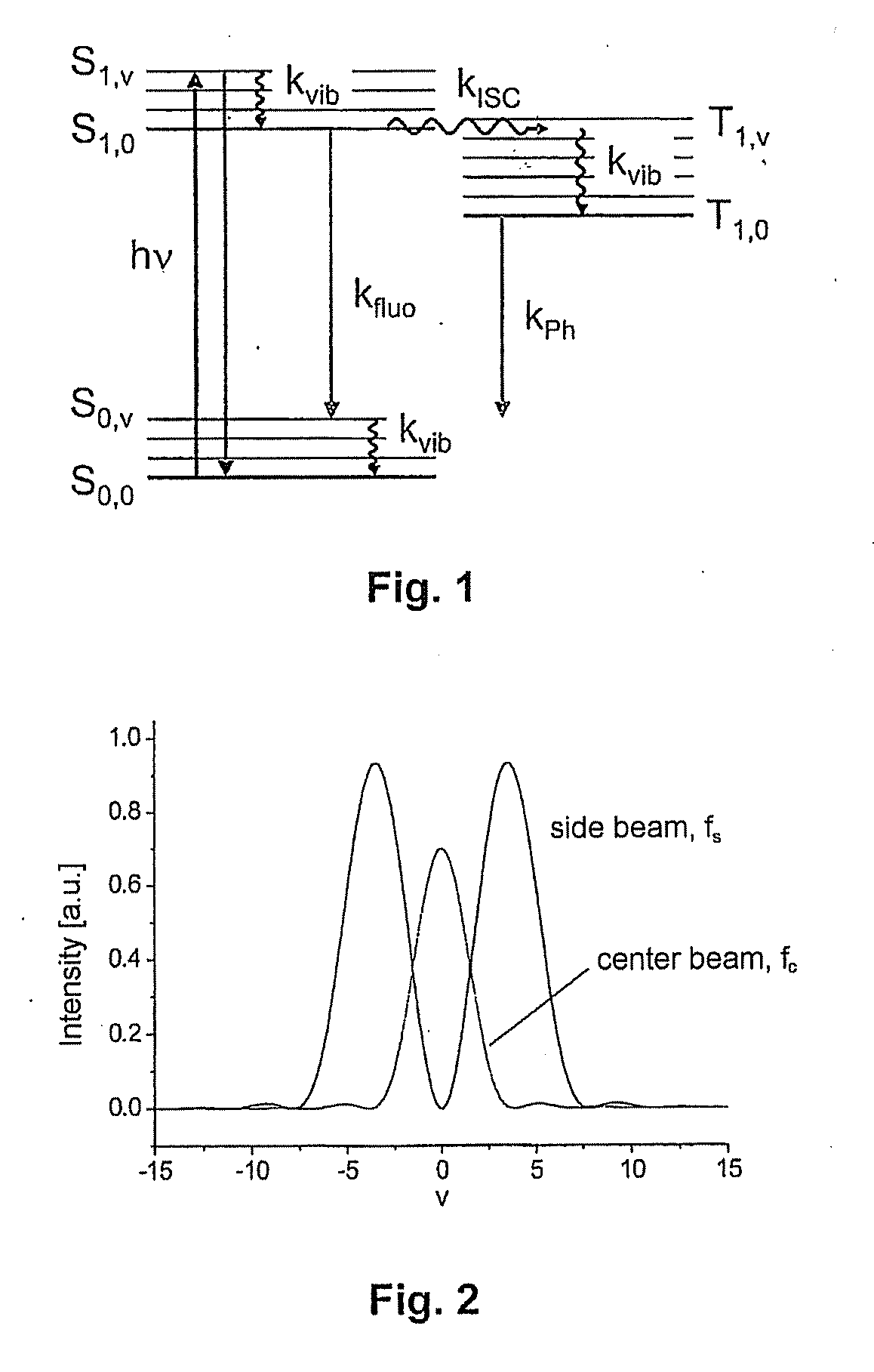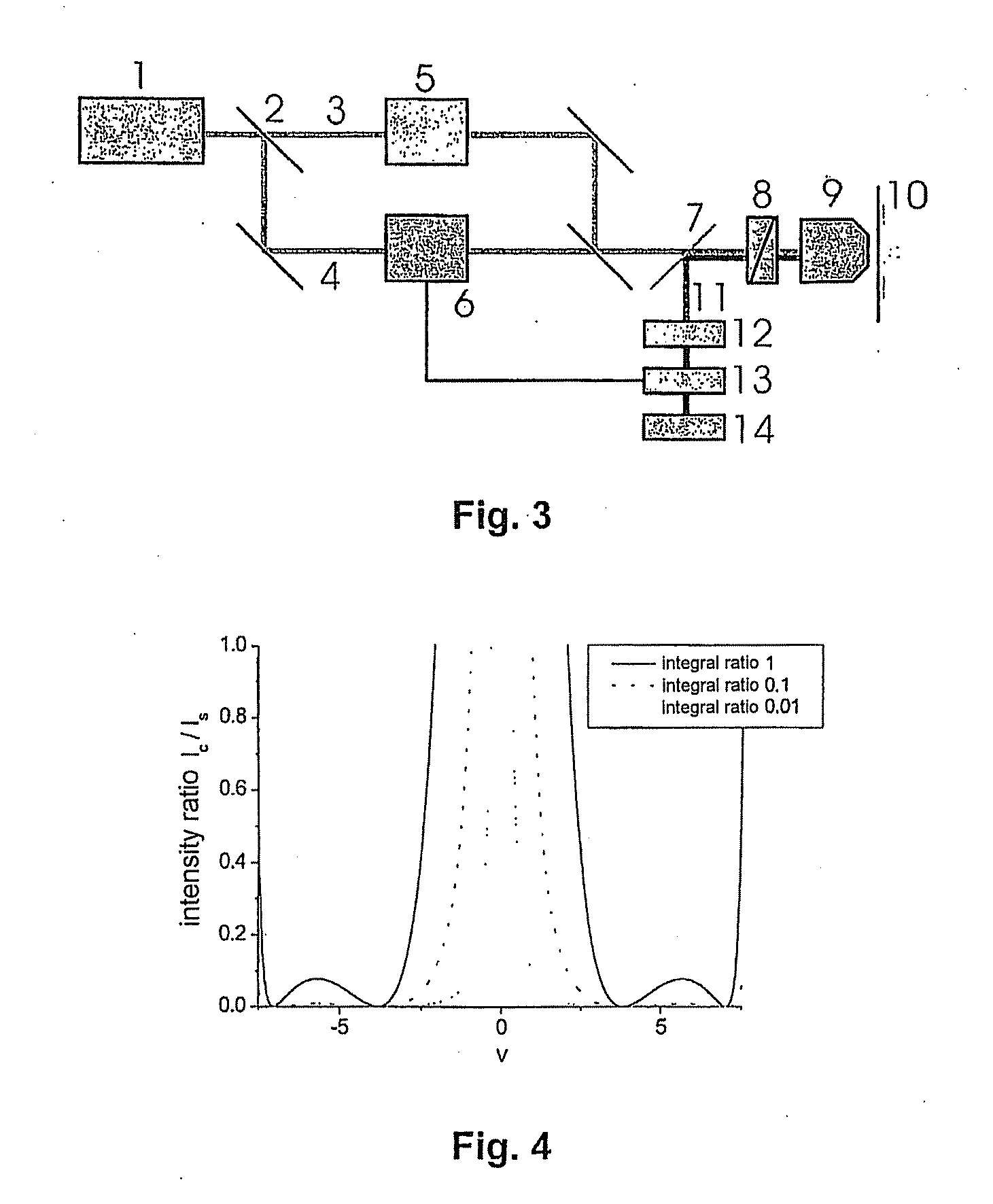Luminescence Microscopy with Enhanced Resolution
a luminescence microscopy and luminescence enhancement technology, applied in the field of luminescence microscopy with enhanced resolution, can solve the problem that the simultaneous occupation of the triplet state no longer necessarily has negative, and achieve the effects of simple construction, and reducing the number of radiation sources
- Summary
- Abstract
- Description
- Claims
- Application Information
AI Technical Summary
Benefits of technology
Problems solved by technology
Method used
Image
Examples
Embodiment Construction
[0034]The typical arrangement, known per se, of the lowest energy level for a fluorescing dye molecule is shown schematically in FIG. 1. Usually photons of energy In excite the molecules from state S0,0 (approximate vibrational ground state in the lowest electronic state) to a vibration-excited vibronic state S1,υ. Conversely, stimulated emission is, of course, also possible. Starting from S1,υ, a fast vibrational relaxation takes place in state S1,0 and subsequently, as competing processes, either fluorescence or the transition to the triplet state Ti,υ with subsequent phosphorescence.
[0035]The excitation is carried out, according to the invention, by at least two different light fields which are arranged in the same way as the excitation laser radiation field and the saturation laser radiation field in the known GSD or STED method. The use of lasers seems sensible but generally does not represent a limitation of the method.
[0036]FIG. 2 shows possible Airy intensity distributions o...
PUM
| Property | Measurement | Unit |
|---|---|---|
| frequency | aaaaa | aaaaa |
| frequency | aaaaa | aaaaa |
| frequency | aaaaa | aaaaa |
Abstract
Description
Claims
Application Information
 Login to View More
Login to View More - R&D
- Intellectual Property
- Life Sciences
- Materials
- Tech Scout
- Unparalleled Data Quality
- Higher Quality Content
- 60% Fewer Hallucinations
Browse by: Latest US Patents, China's latest patents, Technical Efficacy Thesaurus, Application Domain, Technology Topic, Popular Technical Reports.
© 2025 PatSnap. All rights reserved.Legal|Privacy policy|Modern Slavery Act Transparency Statement|Sitemap|About US| Contact US: help@patsnap.com



